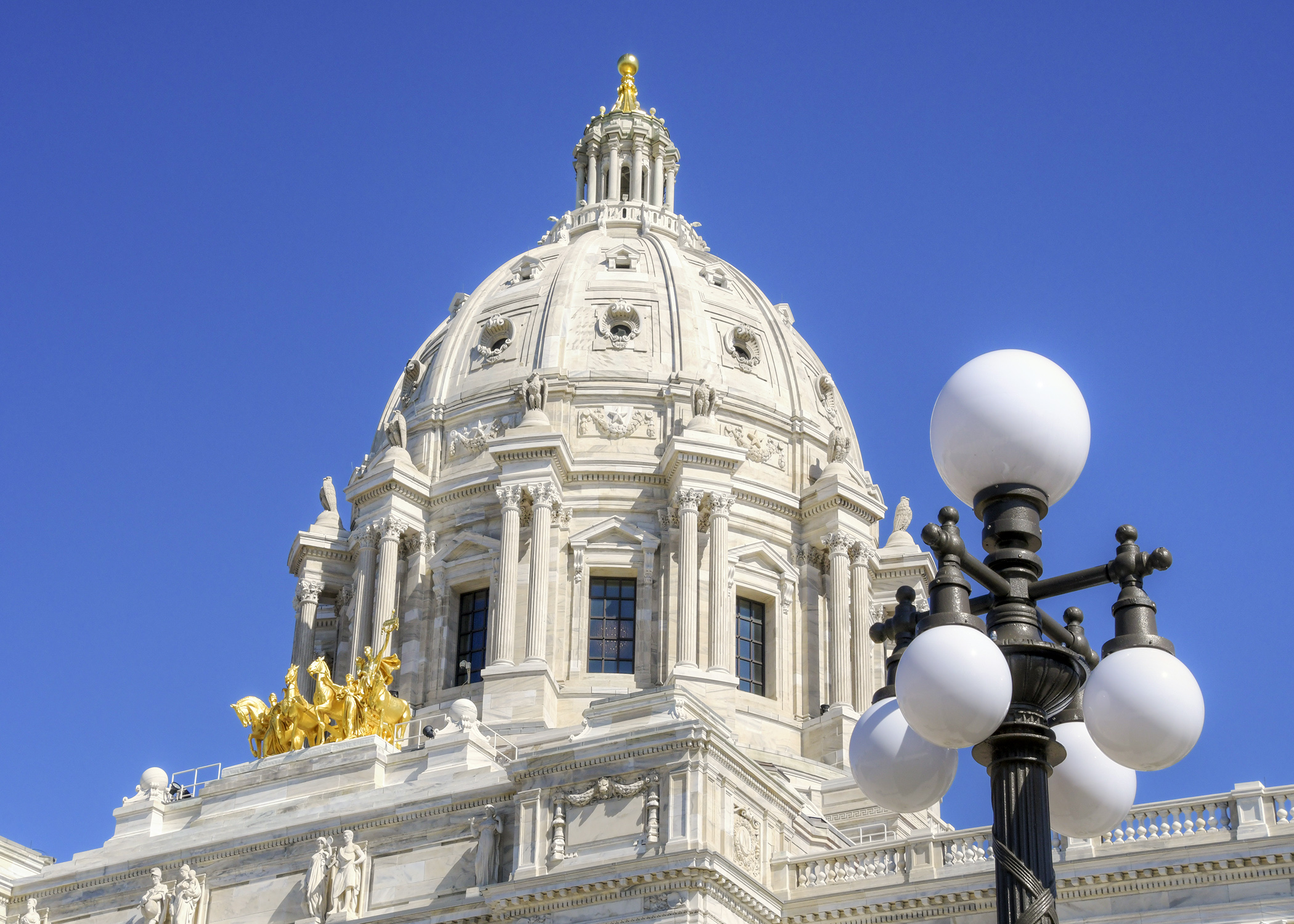Cities and counties could receive part of more than $600 million in COVID relief

When the federal Coronavirus Aid, Relief and Economic Security Act was signed into law March 27, the plan was that money would soon start flowing to states to deal with the COVID-19 crisis. But, once it reached the state level, how would it be disbursed? And by whom?
One proposal for part of the funds emerged at Thursday morning’s House Ways and Means Committee meeting. HF4673, sponsored by Rep. Paul Marquart (DFL-Dilworth), would direct the aid to each city and county in Minnesota, with funding levels determined by population size.
“This bill helps our counties, cities and townships with the funds necessary to deal with the impact of COVID-19,” Marquart said. “It offers economic support for businesses and households hit by this.”
The committee approved the bill, as amended, by a 27-0 vote and sent it to the House floor. It currently has no Senate companion.
Marquart explained that Minnesota received $2.2 billion from the federal government as part of the CARES Act, and that 45% of that “had to go out to local governments.”
“Specifically within the law, you would get direct relief if you had a population of 500,000 or more,” Marquart said. “And the only two units of government that would qualify for that in Minnesota would be Ramsey and Hennepin counties. HF4673 deals with setting up a system to distribute the remaining $667 million to the other units of governments.”
Marquart laid out the funding requirements under the CARES Act, saying that they had to be “necessary expenditures related to COVID-19.” They cannot replace funds already accounted for in the last budget, and must be incurred between March 1 and Dec. 31, 2020.
He said guidelines from the U.S. Treasury Department suggest such uses as medical expenses, testing, tracing and facilitating compliance with COVID-related directives. But funds could also be used for economic support, such as workers’ compensation, facilitating the disposal of farm animals, helping with homelessness, and assisting businesses with interruptions due to COVID-19.
However, he emphasized the money couldn’t be used for such things as property tax relief, severance pay or damage that would be covered by insurance.
“This is not general purpose aid,” Marquart said. “It only goes to necessary COVID-related expenses. … We can expect that this will be audited, and when that happens, I want us to get a clean bill of health.”
The funds would be disbursed in two waves. The first $567 million would go out before June 15, with $255 million to counties, $255 million to cities with a 2018 population of 500 or more, and an additional $57 million to counties to deal with such things as setting up relief funds for expenses incurred by smaller townships.
The remaining $100 million of CARES Act money would be reserved for a special grant program for cities and counties for expenses incurred after Aug. 1 that would be administered by the Health and Employment and Economic Development departments.
Rep. Jerry Hertaus (R-Greenfield) asked how the funding per capita would break down. Marquart replied that, on first distribution, it would be $51.50 for each resident of a city of over 500 people, and $25 for those in smaller townships.
“Is there any chance that the money could be short and we’d have to go back to the General Fund?” asked Rep. Bob Vogel (R-Elko New Market).
“The limit is a total of $667 million,” Marquart said. “Money that is not spent by Oct. 1 will cancel back to the overall $2.2 billion for the state.”
While he spoke in favor of the bill, especially the swiftness with which the funds would get out to cities and counties, Rep. Pat Garofalo (R-Farmington) said that he was unhappy with the wide disparity in per-capita funding between Hennepin and Ramsey and the rest of the counties in the state.
Marquart replied that that decision was made at the federal level.
“It is the one and only place in the law that they provide guidance on where that should go,” he said. “That is a direct appropriation that those counties have already received and are spending. In this bill, there are no dollars that specifically go to Hennepin or Ramsey counties.”
Revenue Commissioner Cynthia Bauerly also spoke in favor of the bill, but recommended that the amount held in reserve for emergency grants be larger.
“We completely agree that we distribute some of this money quickly,” she said. “However, there’s a lot we don’t know yet about this pandemic. It’s been said that this pandemic is a marathon, not a sprint. … The difference between the pandemic and a marathon is that we won’t know when it’s over. We would encourage reserving more than $100 million for a need-based allocation. We’d recommend something closer to half of the funds.”
Related Articles
Search Session Daily
Advanced Search OptionsPriority Dailies
Ways and Means Committee OKs proposed $512 million supplemental budget on party-line vote
By Mike Cook Meeting more needs or fiscal irresponsibility is one way to sum up the differences among the two parties on a supplemental spending package a year after a $72 billion state budg...
Meeting more needs or fiscal irresponsibility is one way to sum up the differences among the two parties on a supplemental spending package a year after a $72 billion state budg...
Minnesota’s projected budget surplus balloons to $3.7 billion, but fiscal pressure still looms
By Rob Hubbard Just as Minnesota has experienced a warmer winter than usual, so has the state’s budget outlook warmed over the past few months.
On Thursday, Minnesota Management and Budget...
Just as Minnesota has experienced a warmer winter than usual, so has the state’s budget outlook warmed over the past few months.
On Thursday, Minnesota Management and Budget...